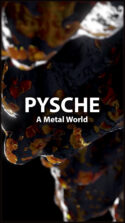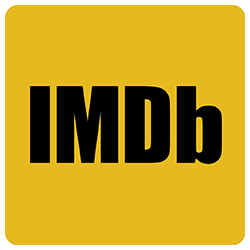A multiple time IFP alum, filmmaker Andrew Droz Palermo (Rich Hill) recently attended SXSW to present the American premiere of his latest feature, One & Two. The film made its world premiere in Berlin this past February. Below, Palermo reflects on his experience in Austin, Texas, working on other filmmakers’ material, how to handle yourself during press Q&As, and how to separate the work from the artist. One & Two can currently be seen at festivals throughout the United States.
This year marked my 6th year attending SXSW – Austin’s annual bacchanalia of music, movies, and tech. Having already premiered our new film One & Two in Berlin, the pressure was off, and so I was able to sit back and enjoy the festivities a bit more than previous years. I saw some great films, spent quality time with old friends, and ate a few too many breakfast tacos.
Thankfully three out of four of our main cast were able to attend the festival: Timothee Chalamet, Grant Bowler and Elizabeth Reaser (Kiernan Shipka was shooting in Canada, but sent us emojis from afar). Even after shooting a movie together in 100 degree North Carolina heat we all still love each other, so that made for an enjoyable premiere and press-day. Something interesting happened on my end in that department. On occasion, while doing the press rounds you get unlucky and get some super-hyper TV interviewer. You know the type: all surface and pep like they just finished a great workout. That’s totally fine, and I understand it makes sense to be up and energetic for TV, but I have a really hard time smiling and laughing my way through those type of interviews.
I watched our host bouncing up and down during the countdown to airtime, and knew we were in for it, so I wondered to myself — am I in control of the energy of an interview? Can I pull them into the moment with me? As an experiment, I tried to get them to at least meet me half way. So I gave very long, very languid answers, and when I felt like they replied with a form question, I’d turn it into something I was more interested in.
Honestly, I have no idea if it worked. I suspect I come off a little bit like a corpse, or even combative, but it made the experience a lot more fulfilling for me, and I feel like it encouraged deeper and more heartfelt answers from our cast. On set, I really tried to my hardest to not be precious about the material, because I wanted the cast to also have a sense of ownership. That sparked interesting dialogue between us about the motivations of characters and their backstories, some of which was reignited after seeing it as a group in Austin and we had a lot of fun unpacking our opinions of the film at our interviewer’s expense.

Carlos Marques-Marcet, Peter Veck, and Hannah Fidell at the “6 Years” premiere.Photo courtesy of Andrew Droz Palermo
This year, in addition to directing a film, I also shot one for Hannah Fidell called 6 Years. Watching a film you shot is very different from watching something you directed, mainly because you’ve had a lot more time to reflect on the process. But even so, in the past I’ve found myself critiquing my work (or the construction of the film) and never really allowing myself to be absorbed in the narrative. It was much different for me this go-round — I really liked watching it. I think two things are at play here:
1. I think I’m starting to allow my work to be part of a bigger learning process in ways I previously unable to, and that has allowed me to enjoy my perceived successes and failures.
2. More simply, I think the movie is great. Hannah and her editors, Sofi Marshall and Carlos Marques-Marcet, did an amazing job shaping the film. The electric and largely improvised performances by Taissa Farmiga and Ben Rosenfield that I witnessed on set were firing on all cylinders in the final edit. And bonus, it found a home!
Which brings me to my final topic: having your film out in the world. The festival release is often talked about as a business affair — there are tons of articles out there about how to sell your movie, how to put butts in seats, or how to get into fests, et cetera. Those items are very important to the life of a film (and you should read them) but what I’m interested in talking about lately is how does it feel to have a film out? How do you manage interacting with audiences and press about something so personal? How do you sleep at night when things don’t go as planned?

Kim Sherman and Neima Shahdadi at the “One & Two” premiere party. Photo courtesy of Andrew Droz Palermo
While I’m no zen master or therapist, I have spent a good deal of time talking about these things with people who are, or who are at least to me. The first short I made called A Face Fixed was a deeply personal film. I was happy with it when I finished it. I really thought the film had a great mood, felt nicely paced, and it looked and sounded great. But something happened when I showed it to the first audiences — I felt exposed. I had spent so much time on it that I really started to feel it was a reflection of my deepest self, and I grew to become unhappy with it and myself.
Did it not meet my expectations? Was I in need of some gratification I didn’t receive? Did airing out personal wounds make them worse? The answer is “yes” to all of the above. Afterward, I spent time soul-searching, and really trying to remember why I liked to make films. I tried to learn to separate who I am from the things I make, to truly let go of projects once they are finished, and that’s been extremely helpful for me creatively and emotionally. It took me a bit to find my way, but with One & Two and Rich Hill before it, I’ve grown to throughly enjoy post-screening Q&A’s. They’ve become some of the most interesting and gratifying experiences of festival life.
Powered by WPeMatico













